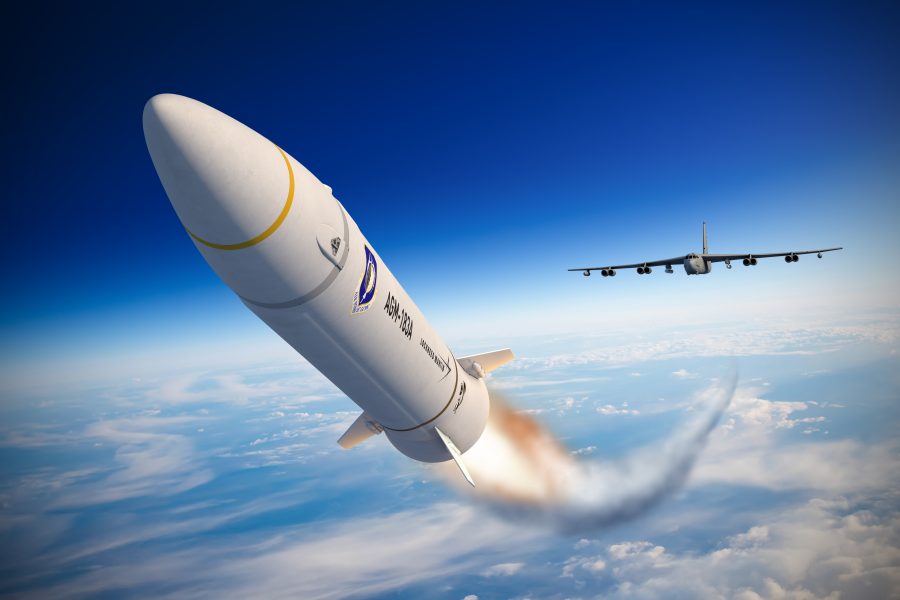The Air Force’s Air-launched Rapid Response Weapon, or ARRW, will be the first hypersonic weapon deployed by the U.S., but service acquisition chief Will Roper sees a high- and low-flying mix of hypersonic missiles, complicating an adversary’s defenses, as a longer-term goal.
Speaking in a Zoom chat with reporters May 14, Roper said the ARRW is tracking to initial operational capability “by the end of fiscal ’22.” It’s an “exceptionally important” program as the first such weapon, he said, and “that’s why we want to keep that on track.” He said he’s “very confident” the Joint force will “need that weapon in reasonable quantity.”
However, “we don’t want to make that the place that we end” hypersonic development. While the ARRW will leave the atmosphere and glide to its target, an air-breathing hypersonic cruise missile based on the Hypersonic Air-breathing Weapon Concept could be small enough to launch from all combat aircraft and at lower altitudes, Roper said.
“We could carry more of them on a bomber, but we also could carry them on our fighters, and that opens up the entire Air Force quiver,” he said. “That kind of conundrum to present to an adversary is exactly what we want … We can hit you high and low, with weapons that are wicked fast, that are going to require a lot of expense for you to try to defend against.”
The “worst thing” the U.S. could do is “give that adversary the benefit of only having to look up or down, or the benefit of only having to worry about bombers but not fighters,” he said.
Roper said he’s “delighted” that the air-breathing hypersonic technology has “matured faster” than expected, helped by advanced manufacturing techniques, so “it’s time for us to shift out of the laboratory … into prototypes similar to ARRW, to … get it into a warfighters hands.” He predicted an aggressive prototyping campaign similar to that taken with ARRW, using Section 804 authorities from Congress to accelerate development and “get to an operational endstate as rapidly” as possible.
All that is possible based on “the technology foundation” built by Air Force Research Laboratory and the Defense Advanced Research Projects Agency with the HAWC program, he said.
The first example won’t be the final version, he said, but will be “something that makes a difference for the warfighter: Get it in low-rate production, and start spiraling the technology until you hit a peak that is worthy of that ‘gold medal’ and a larger-quantity buy.”

